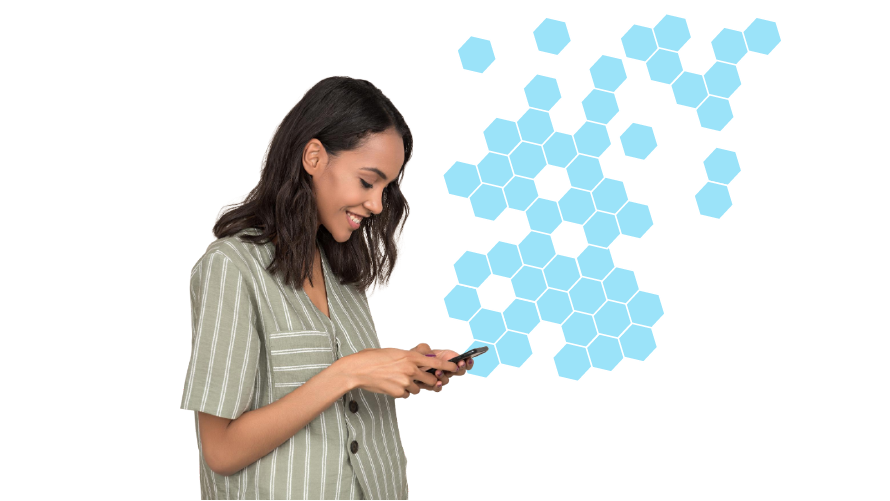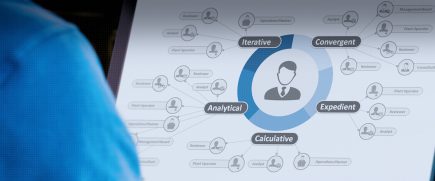We use personas to guide the designing of websites, marketing campaigns, mobile apps, and many other contemporary experiences. Once we launch, we gauge the success of our creations for these archetype user groups. And eventually, we create feedback loops that allow us to improve our creations using the perspective of real users.
In this blog we explore how data can be a powerful leverage point to empower the process of persona creation, the promise it holds in enriching the usability of our products and services.
Hari Nallan & Mohita Jaiswal - April 2020

The need for audience segmentation
Personas help to understand one’s users with their needs, behavior, and expectations. These are archetypes that represent the key traits of a large segment of your audience. Personas can be classified as:
- Persona as a hypothesis: Character profile of a hypothesized set of users.
- Persona as a synthesis: Through primary research, when you have understood your users and you are in a position to look at the categories of users based on their behavior profiles.
- Persona as a Customer segment
However, the description should include and not be limited to the user’s educational background, lifestyle, interests, values, goals, needs, behavior, attitudes and other recurring patterns. While rich in behavioral and interaction data at first, these personas represent one snapshot in time, enough to get you going and solve for basic usability.
But how relevant are these in the long run?
The best personas don’t just describe users, but actually help designers predict their behavior. Obviously, for personas to facilitate these types of predictions, they need to be based on more than intuition and anecdotes.
A data driven approach to persona creation is incumbent to meet that need.
More organizations are using now data-driven personas
Facebook while investigating its anonymous complaints, derived a persona for its complainants. Through its user data, it found that teenagers* who had complained regarding a photo they were tagged in, felt embarrassed because of being tagged. Here the proportion of girls feeling the same was more than boys, while individuals were more likely to share it as a problem than report it as an issue. On digging deeper through engagement, it was found that they did not report because they did not want their friends to be in trouble.
Deriving some crucial insights about the age, gender, behavior, pain points and motivations of its complainants, facebook was able to improve its reporting and support system.

Similarly, Netflix fuels their predictive content engine by integrating a hybrid of subscriber declarative data and an immense amount of behavior and interaction data. It also uses the same to streamline their user interface.
Data that we have gives an empathic understanding of the user types
The problem with many personas is that they are either based on irrelevant data, poorly sourced data, or no data at all (but assumptions in cases of hypothesized users).
1. What data is relevant?
A first step is to identify the key patterns that are driving the majority of conversions in your business – as identifying these patterns will help you to reveal your core audience.
Knowing one’s core audience can help us mine useful data –
- One which can be collected through user research
- The other being quantitative data obtained from tracking the contextual user interaction patterns of this core audience with your product or service.
The combined power of what the user does, in a continuous span of time, and why they engage in a particular way (knowing motivations, demographics etc.) can help teams to predict their behavior with respect to potential product/service changes with a greater accuracy.

2. How to source rich data?
We need to use multiple sources of data to understand the motivations, attitudes, behaviors, and desired outcomes of our customers. The variety adds to building a comprehensive picture of a customer segment, as one tracks their engagement and journey across different touchpoints with a progression in time.
a. Web exit surveys, online surveys and polls data
Web exit surveys are designed to have a single question pop up on your site at a designated time. While the questions to be asked depends on one’s goal. Do you want to know if your site or products/services meet customer needs? Or do you want to understand sources of friction that keep customers from engaging/buying? These can bring valuable inputs on what works and impedes the engagement.
b. Web traffic analytics and CRM systems data
Web analytics can showcase the on-site behavior of key customer groups. Customer segment insights from google analytics for example — can create lists based on demographics like(age and gender), user language, location, and stage of the purchase funnel. Other than analyzing through a primary dimension (as age), one can also add a secondary dimension (like affinity) to reveal more insights on the behavior of the selected age. We can also filter by language and location in order to see where in the world our audience is visiting us from.
c. Social media data
The popularity of social media platforms creates opportunities to gather useful information about users likes, dislikes and engagements. Since the data provided by the online social analytics platforms (e.g., YouTube Analytics, Google Analytics, LinkedinAnalytics, Facebook Insights) are always at an aggregated group level, they do not show information on the individual users of those platforms. The use of aggregated data ensures that we are only using non-personally identifiable information.

3. How to make sense out of the noise?
Post the collection of data, we need to connect and unify all of this data, like with a customer data Platform. Parsing different sources of data through a common filter which could transform them into a uniform format would be useful to use this information combined with qualitative user research data to build personas. Data-first personas progressively integrate customer and user interactions and behaviors into the persona creation. This ensures we build new product, service, or content using actual, aggregated customer behaviors.
4. How to keep personas up-to-date?
If a persona is seen in the light of a state of mind of the user at a particular instant, it then becomes a combination of – the context, a triggered event, and a triggered user behavior. This creates possibilities of multiple versions of personas, created with any change in this combination. By employing data-driven personas, it is possible to create personas in real time, based on automated analysis of actual aggregated data, integrating data from different sources. These data-driven personas are kept updated through an automated loop of data collection and re-computation of the personas.
Apply user personas to simulate customer behavior
Translating what one learns from unified user profiles can inform content creation, persona management, and future customer-centric projects. These kinds of unified insights can add new levels of user empathy and understanding to your personas.
Serving customers and users relevantly and effectively based on a progressive understanding can lead to increasing engagement, activity, purchase, and loyalty. The more these data-driven personas evolve, the more likely they will keep a product or service relevant and purposeful.
For the data-driven organization, the contemporary user persona isn’t enough anymore. Those willing to take the journey to unify and enrich their customer understanding will find more engaged, responsive customers in the future.




